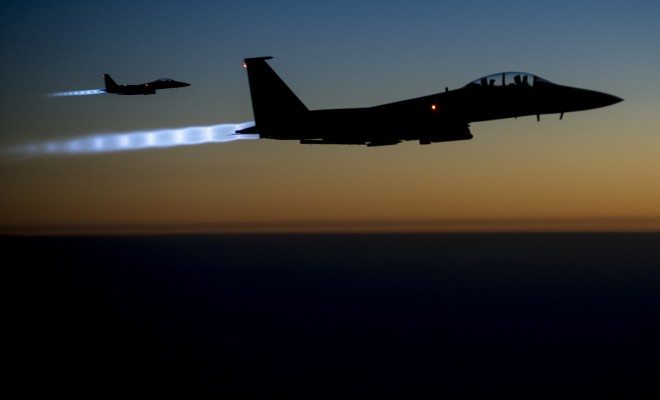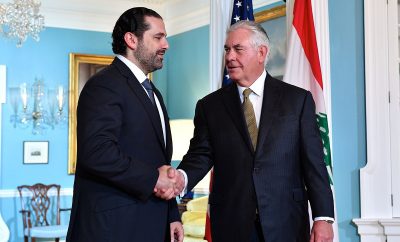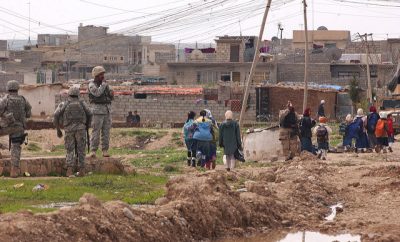
Image courtesy of [U.S. Department of Defense Current Photo via Flickr]
News
What is the U.S. Strategy to Fight ISIS?
In light of the recent tragedy in Paris, the fight against ISIS is likely to retake the spotlight. In a press conference on Monday, President Obama was forced to defend his current strategy for the Middle East, as his opponents argue that the United States needs to take a stronger approach to prevent future terrorist attacks on the western world.
Currently, the United States is leading an international coalition of airstrikes against the Islamic State in Iraq and Syria. In addition to airstrikes, a force of over 3,000 U.S. advisors is on the ground in Iraq to train the local military. The focus of the campaign is to build up ground forces in the region, notably the Iraqi army and moderate Syrian rebels, while supporting established groups as they fight ISIS. So far, the goal has been to contain ISIS, prevent it from taking additional land, and slowly take back territory without the direct use of American soldiers on the ground.
At the end of October, the president announced that he was sending up to 50 special operations troops in Syria to coordinate ground forces there. While the addition of American ground forces in Syria marks a possible departure from Obama’s promise not to use ground forces in Syria, he emphasized that the general strategy remains unchanged. We also know that prior to that announcement, U.S. special forces have been embarking on covert raids against ISIS. One such raid led to the first American combat fatality in Iraq since 2011, while U.S. forces rescued 70 hostages facing what anonymous sources told CNN was “imminent mass execution.”
The Obama administration argues that training local forces, rather than using U.S. troops, is crucial for stability in the long term, but doing so also requires a lot of time. One aspect of the U.S. strategy that has generally failed is the effort to train and build up a force in Syria. Secretary of Defense Ash Carter recently told Congress that the army has only managed to train about 60 Syrian fighters to take on ISIS. As a result, the Defense Department shifted its plan in Syria to support existing forces rather than build new ones.
President Obama’s strategy has been relatively successful in terms of containing and pushing back ISIS in Iraq and Syria, but in light of the recent attacks in Paris many argue the current response is not strong enough. While criticism of the current strategy in the Middle East is easy to find, an alternative strategy is more elusive. Most, like Republican candidates, argue that the United States needs to take a stronger tone in the region, but few have said how they would actually do so. John Kasich argues that boots on the ground are necessary to defeat ISIS, but he has not yet said how many would be required. Lindsey Graham is so far the only candidate who has given a specific policy plan for the region, calling on the United States to deploy 20,000 troops to Iraq and Syria to defeat ISIS.
Donald Trump has said that he would “bomb the shit” out of ISIS, but he has been generally vague on details beyond that–though if you ask him, vagueness is actually his intention. Jeb Bush has said that the United States needs to declare war on ISIS, which would include the imposition of a no-fly zone. He has also called on Obama to consult with military leaders to figure out how to defeat ISIS and then enact that strategy, but he has not directly offered a plan beyond the need for U.S. leadership in the region. Marco Rubio has criticized the current strategy while coincidentally offering a plan that looks very similar to the current strategy. However, he argues that only Sunni forces will be able to defeat ISIS, who claim to be Sunni Muslims themselves.
In a press conference at the G20 Summitt on Monday, President Obama addressed his critics while stating that the current strategy in the Middle East will remain in place. He reiterated his view that using local forces to fight ISIS is the most effective way to build stability and prevent a resurgence. When asked about the use of U.S. troops, he highlighted the threat that ISIS poses beyond its territory in Iraq and Syria:
And let’s assume that we were to send 50,000 troops into Syria. What happens when there’s a terrorist attack generated from Yemen? Do we then send more troops into there? Or Libya, perhaps? Or if there’s a terrorist network that’s operating anywhere else — in North Africa, or in Southeast Asia?
The nature of the threat posed by ISIS is becoming increasingly more complicated as the group begins to act outside of its territory in Iraq and Syria. Critics argue that the United States needs to take a much stronger stance in Iraq and Syria, but few have proposed a vision of what that would look like.








Comments